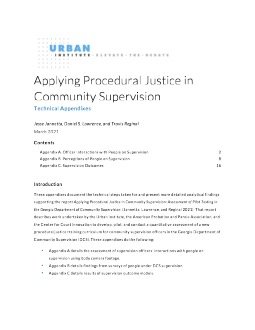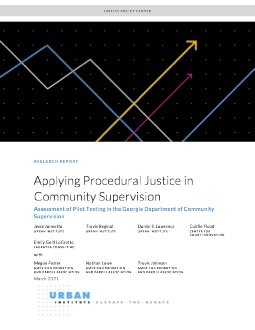By Lois M. Davis, Louis T. Mariano, Melissa M. Labriola, Susan Turner, Andy Bogart, Matt Strawn, Lynn A. Karoly
This report presents findings from the three years of the California County Resentencing Pilot Program, which was established to support and evaluate a collaborative approach to exercising prosecutorial discretion in resentencing. Nine California counties were selected and were provided with funding to implement the prosecutor-initiated resentencing (PIR) three-year pilot program. In each pilot county, participants in the pilot were to include a county district attorney (DA) office and a county public defender (PD) office and may have included a community-based organization.
RAND, a nonprofit research organization, was selected by the California State Legislature as the independent evaluator of the pilot program. The pilot term was September 1, 2021, through September 1, 2024; the evaluation term was September 1, 2021, through January 31, 2025. The evaluation in this report comprises three components: a descriptive and outcomes analysis of data collected by DA offices and supplemented by data from the California Department of Corrections and Rehabilitation, a qualitative implementation assessment, and a cost study to estimate the resources required to implement the pilot activities. Subsequent reports will present the recidivism outcomes.
Key Findings
PIR filled a gap in sentencing policies by focusing on crimes against persons.
The program was not a single intervention at the county level but rather a set of different types of interventions by the nine pilot counties and was implemented in the context of other resentencing legislation.
Each county developed its own eligibility criteria for resentencing consideration. The criteria focused on such factors as the age of the inmate, the crime committed, and the length and other details of the sentence.
Factors that facilitated implementation include a history of collaboration between the DA and PD, leadership support, positive political climate, adequate resources, close coordination with the courts, and the use of stipulation.
Factors that hindered implementation include a less-supportive political context, differing views between DAs and PDs, inclusion of more-serious and more-complex cases, staffing shortages, and the complexity of reentry planning.
Among 1,146 case reviews initiated during the reporting period, 240 cases were referred to the court for resentencing; the DA offices decided not to refer 710 cases that they had reviewed; and 196 cases were still under DA review or were deferred for future review.
Of the 233 cases for which courts had ruled on a resentencing motion, 227 resulted in resentencing, and 174 of those individuals have been released from prison.
Resources for pilot-related activities were primarily for personnel.
Total expenditures for the six counties most actively engaged in the pilot reached nearly $28 million over the three years.
Recommendations
There is a need to clarify the respective roles of DAs and PDs and for an accountability mechanism to encourage them to work more closely together.
There need to be more-realistic time frames for the resentencing process, including the number of cases reviewed and length of time for DA review of cases to serve as benchmarks for counties to meet.
Eligibility criteria should be revisited and possibly streamlined, in addition to some standardization of what factors should be considered in the review of cases and decisions of whether to recommend to the court for resentencing.
A more formal arrangement between California Department of Corrections and Rehabilitation and the counties is needed to tackle the complexity of resentencing under PIR and improve access to clients and documentation.
Training is needed for the DA and PD staff, especially in such areas as the overall PIR initiative, case reviews, and offender central file analysis.
Key factors that helped streamline the resentencing process were the use of stipulation and having a dedicated court assigned to PIR cases. In the future, counties implementing PIR might consider using these two mechanisms.
Funding agencies could consider allocating the community-based organization contract funding to the PDs to implement and varying the size of the funding according to the size of the incarcerated population in a county.
Reentry planning requires further examination.
Santa Monica, CA: RAND, 2025.





















